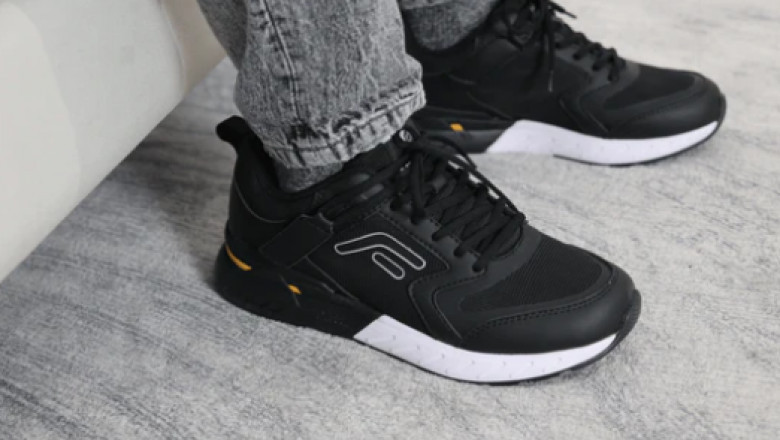views
Living with diabetes requires extra care, especially when it comes to foot health. Proper footwear plays a critical role in preventing complications such as ulcers, infections, and injuries. For men with diabetes, finding the right pair of shoes isn’t just about comfort – it’s about safety and long-term well-being. Here’s everything you need to know about selecting the best shoes for diabetics men's.
Why Diabetic Shoes Are Essential
Diabetes can lead to reduced blood circulation and nerve damage, particularly in the feet. These conditions increase the risk of:
-
Foot ulcers: Poor circulation can slow healing, making minor injuries worse.
-
Infections: Nerve damage may prevent you from noticing small cuts or blisters that can become infected.
-
Amputation: Untreated infections or severe ulcers can lead to serious consequences.
Diabetic shoes are specifically designed to minimize these risks. They provide extra cushioning, reduce pressure points, and promote healthy circulation.
Key Features of Diabetic Shoes
When shopping for diabetic shoes, look for these essential features:
-
Extra Width and Depth
-
Ample space reduces pressure on sensitive areas and accommodates orthotics if needed.
-
Look for options with wide or extra-wide sizing, such as 2E, 4E, or 6E.
-
-
Seamless Interiors
-
Smooth interiors prevent friction and irritation, reducing the risk of blisters or ulcers.
-
-
Adjustable Closures
-
Velcro straps or elastic laces ensure a secure fit, accommodating swelling throughout the day.
-
-
Cushioned Insoles
-
Diabetic shoes often include removable insoles with extra cushioning for shock absorption and pressure relief.
-
-
Slip-Resistant Outsoles
-
Rubber or other non-slip materials enhance stability and reduce the risk of falls.
-
-
Breathable Materials
-
Mesh, leather, or other breathable fabrics prevent moisture buildup, reducing the risk of infections.
-
-
Protective Toe Box
-
A wide, reinforced toe box protects against accidental bumps or pressure on the toes.
-
Top Picks for Diabetic Men’s Shoes
1. FitVille Men’s EasyTop Diabetic Shoes V1
-
Why Choose Them: These shoes feature extra-wide options (up to 4E), adjustable Velcro straps, and cushioned collars for all-day comfort. The U-shaped heel cup provides excellent support, while the slip-resistant outsole ensures stability.
-
Ideal For: Men with high insteps or swollen feet.
2. FitVille Men’s EasyTop Wings Diabetic Shoes V2
-
Why Choose Them: Designed with a breathable PU leather upper and OrthoLite® insoles, these shoes offer superior cushioning and moisture management. Extra-wide options (up to 6E) make them perfect for those with foot deformities or significant swelling.
-
Ideal For: Long days on your feet with maximum support and comfort.
3. New Balance 928v3
-
Why Choose Them: A classic choice with motion control technology, excellent arch support, and a seamless interior. The sturdy design helps alleviate foot fatigue.
-
Ideal For: Active men needing extra support for walking or standing.
4. Dr. Comfort Douglas
-
Why Choose Them: This lightweight dress shoe offers a stylish yet functional option for formal occasions. It includes extra depth and a protective toe box.
-
Ideal For: Professional settings or events.
5. Propet LifeWalker Strap
-
Why Choose Them: Adjustable straps, cushioned midsoles, and a lightweight design make these shoes a versatile choice for daily wear.
-
Ideal For: Casual use with added convenience.
Tips for Buying Diabetic Shoes
-
Consult a Podiatrist
-
A foot specialist can recommend shoes tailored to your specific needs.
-
-
Try Before You Buy
-
Visit a store to ensure the fit is perfect. Look for enough room in the toe box and no pinching.
-
-
Break Them In Gradually
-
Wear new shoes for short periods at first to ensure comfort and avoid irritation.
-
-
Inspect Regularly
-
Check your shoes for signs of wear, such as thinning soles or fraying interiors, which could increase the risk of injuries.
-
-
Replace When Necessary
-
Worn-out shoes lose their protective and supportive features. Replace them as soon as they show significant wear.
-
Caring for Your Feet
In addition to wearing diabetic-friendly shoes, practice these foot care habits:
-
Inspect Daily: Check for cuts, blisters, or swelling.
-
Wash and Dry Thoroughly: Keep feet clean and dry to prevent infections.
-
Moisturize: Use a foot cream to prevent dryness but avoid applying between the toes.
-
Wear the Right Socks: Look for moisture-wicking and seamless socks designed for diabetics.
-
Trim Nails Carefully: Avoid cutting too short to prevent ingrown nails.
Conclusion
The right pair of shoes can make a world of difference for diabetic men, ensuring comfort, safety, and mobility. Brands like FitVille, New Balance, and Dr. Comfort offer excellent options tailored to diabetic needs. By prioritizing proper footwear and adopting good foot care practices, you can take significant steps toward protecting your health and enjoying an active lifestyle.
Invest in your feet today – because they carry you every step of the way!






















Comments
0 comment